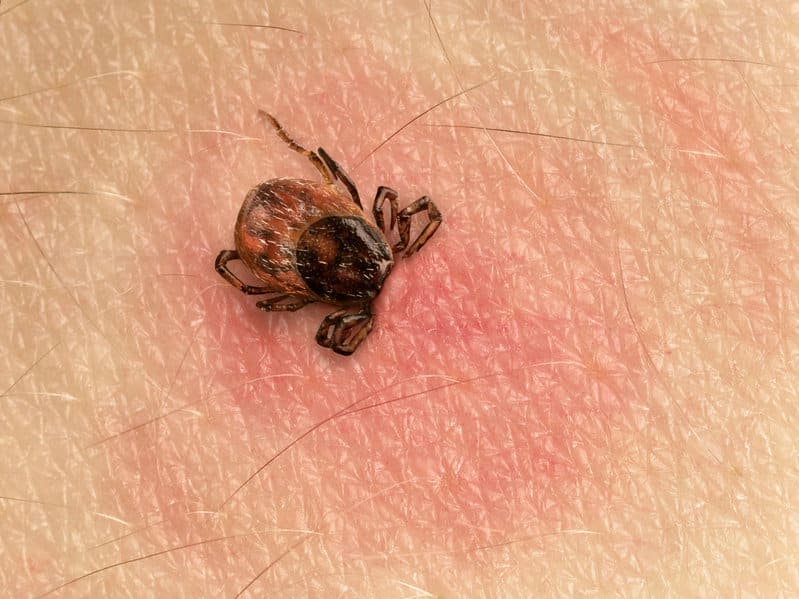The Skinny:
How can such a small thing, like a tick bite, create such big problems? WellWell’s advice is to worry less about this and more about prevention and consequences. Tick bites can lead to Lyme Disease, the most common vector-borne disease in the United States. It is a messy and growing disease that affects more than 35,000 people in the U.S. every year, according to The Centers for Disease Control and Prevention. The vast majority of the infections occur along the East Coast from Virginia through Maine and in the deer-loaded states of Wisconsin and Minnesota. Catch the bite early, and antibiotics treat any problems. Ignore the symptoms, such as fever, headache, fatigue and skin rashes, and trouble could be at hand. How serious? How about ugly infections spreading to joints, hearts and nervous systems. Do these warnings mean people should avoid the woods in high-risk areas, especially during the warmer months when ticks are looking to latch? Not necessarily. But it is a good idea to be prepared and protected, which is where WellWell has you covered. Read on.
The Slate:
Avoid Tick Hide Outs
These little creeps love to hang out on tall blades of grass or bushes and grab onto unprotected legs and other body parts as someone walks by. Therefore, it is always good to avoid grassy fields and stay on well-cleared paths.
Heads Up
Ticks are also fond of trees and branches, and they can jump onto heads and burrow into scalps. The solution is to wear caps and apply some repellent to the noggin. It is recommended to spray it on your fingers first and work it in gently.
Limit Uncovered Fleshy Bits
Covering up exposed skin with long-sleeve shirts, long pants and high boots is a great way to block ticks from grabbing on. Light-colored clothing also makes it easier to see any of these buggers and depose them.
Permethrin
The U.S. military has tested and now uses a synthetic version of the plant-derived pesticide as an effective way to prevent tick bites on its personnel. They purchase uniforms pre-treated with permethrin. Okay, the idea is to follow the military’s lead and spray clothing with this safe repellent.
Clothes Redo
Ticks aren’t generally fond of hanging out in homes because of their low humidity. It is still a good idea to don new duds after returning from a walk and tossing the used ones in a dryer for 20 minutes. The high heat will kill ticks.
Shower
It’s always nice to take a hot shower after a hike. It is also a good way to limit potential tick problems. The water will help wash away insects while also giving those under the nozzle a chance to examine themselves. Everyone should pay careful attention to hidden body areas, like groins, armpits, back of knees, belly buttons and scalps.
Identify & Remove
See a tick and remove it right away with a fine-tipped tweezer. Get it in the first 24 hours, and the chance of getting Lyme disease is extremely small.
Dogging It
Ticks love dogs. People love dogs. Unfortunately, ticks can infect dogs and even transfer over to people. Owners should check their dogs regularly and remove ticks right away. More ways to keep ticks at bay include flea and tick baths and tick collars. Other options include monthly medications administered orally or applied directly to the skin.
Eyes Up:
Got a tick trick you want to share? Let us know at info@wellwellusa.com.
WellWell editors independently identify services and products of interest. If readers purchase anything through the associated links, WellWell may earn a commission, which goes to support our work. Learn More.













